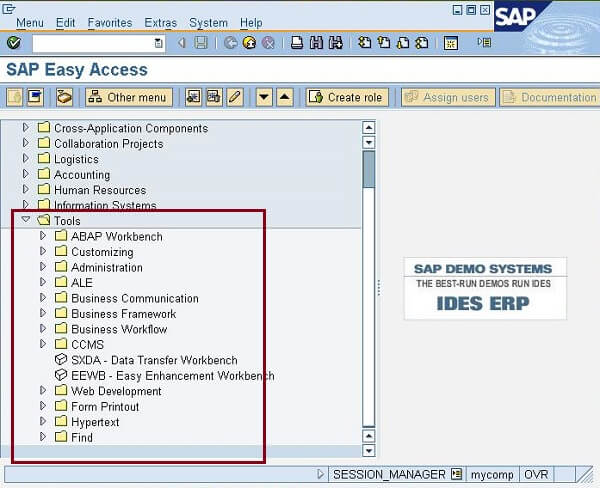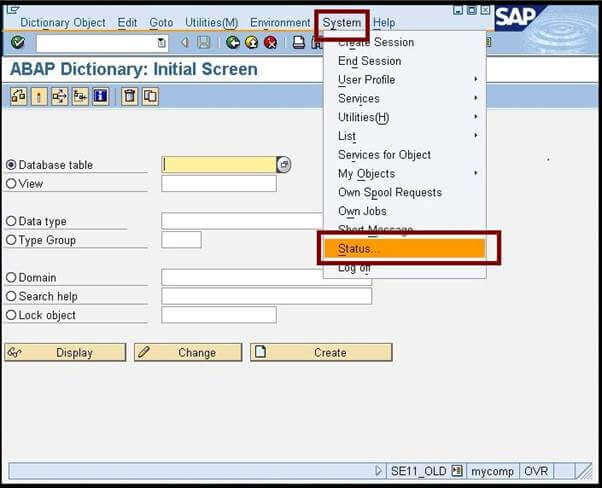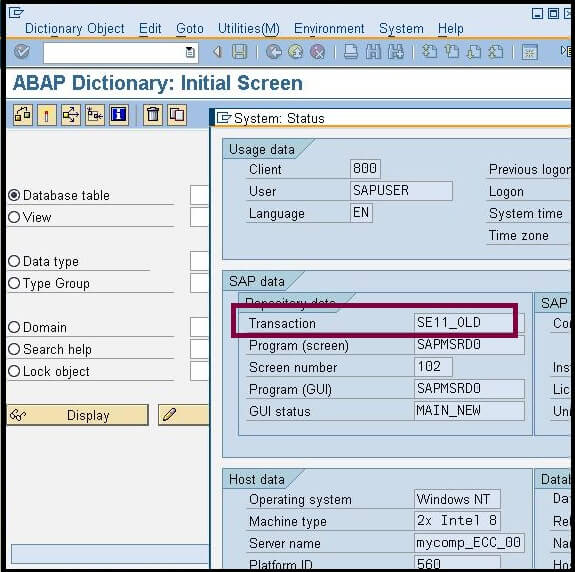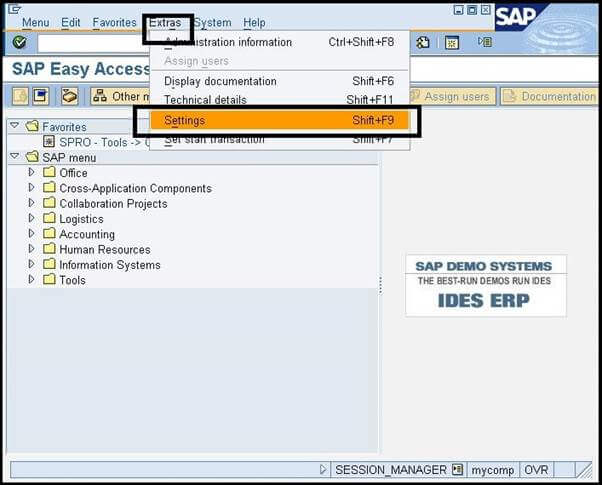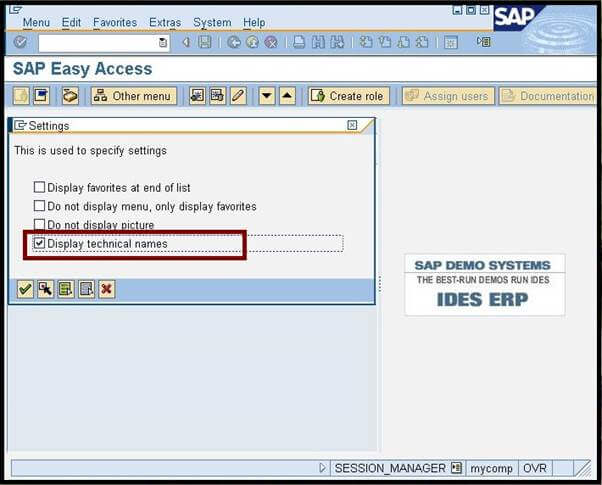Introduction to SAP ABAP WorkbenchSAP ABAP Workbench is the collection of tools that are used by the ABAP developers to create various applications using ABAP language in the SAP ERP system. All the workbench tools are integrated with each other. The various tools are given as:
It is the graphical programming environment that allows developers to develop, test, and run the ABAP programs in the SAP system. ABAP workbench allows us to create a database table, view the fields, and browse the data within the tables using its one of the most popular tools, ABAP data dictionary. With the help of these Workbench tools, we can create programs, user interfaces, and can access the database information in the SAP system. The below diagram explains the work process of ABAP Workbench in SAP R/3 System architecture: 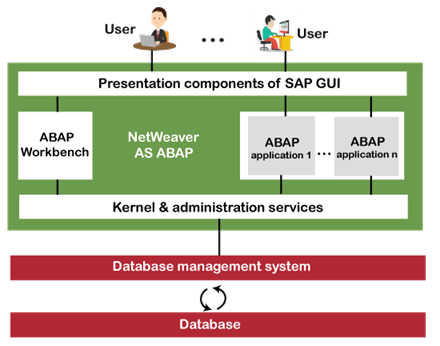
To access the ABAP workbench for the development, the menu path in SAP Easy access is given below: Consider the below image: 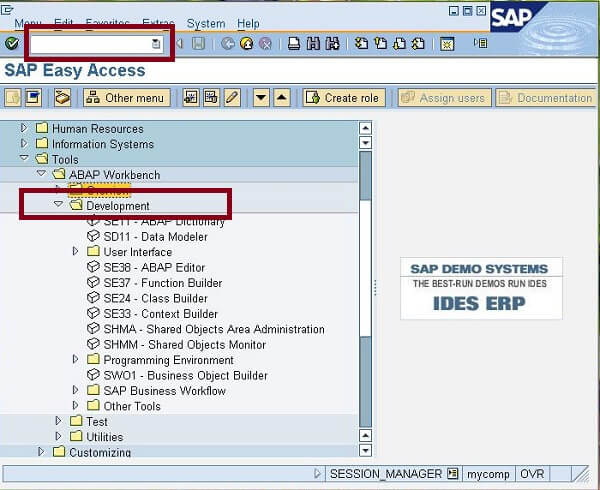
In the above image, we can see that all the workbench tools are given under the Tools-> Development option. We can access these tools in two ways:
The ABAP Workbench Menu is divided into four sections:
Features of ABAP Workbench
ABAP Workbench Components/Tools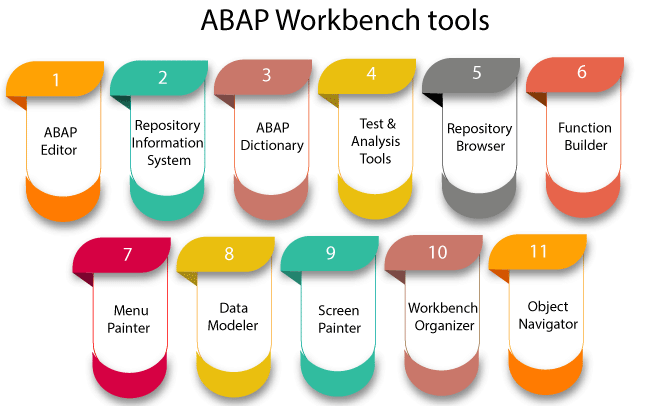
Below are some important development tools of the ABAP Workbench: 1. ABAP Data Dictionary: It is one of the most important tools of the workbench, which is used to create and manage the tables without redundancies. It can be directly accessed using the SE11 transaction code. The menu path for this is given below: 2. ABAP Editor: It is another important component of the ABAP Workbench, which is a source-code editing tool. The ABAP developers spend lots of time on this ABAP editor. It is the tool where we build all the logics and write/edit the code. It can be directly accessed using the SE38 transaction code. The menu path for this is given below: 3. Object Navigator: It is the main entry point of the ABAP workbench as it brings all the tools together and also creates an efficient environment for us to develop the programs. It can be used to organize programming applications in an integrated environment. It is the best-used tool when we need to develop large programs with many function modules and many screens as it provides an easy way to navigate between the applications. We can directly access it using the transaction code SE80. The menu path for this is given below: 4. Function Builder: It is most similar to the ABAP editor and allows us to access the entire SAP standard module.But its primary function is to define some specific tasks that can be accessed from other programs also. Such as, we can create interfaces using function builder. It can be directly accessed by using the SE37 transaction code. The menu path for this is given below: 5. Screen Painter: It is used to define the input screen, such as by using this, we can create our own GUI screen for the programs. It allows us to create the dictionary objects such as views, database table, etc. It can be accessed using the SE51 transaction code. The menu path for this is given below: 6. Menu Painter: Menu Painter is a tool, which is used to create the user interface for our program. It can generate the buttons, menu bar, icons, etc., or can customize the user menus which are given by default. We can also define whether a menu event should be triggered through the double mouse click or by pressing the enter key. It can be accessed directly by using the SE41 transaction code. The menu path for this is given below: 7. Class Builder: It is the same as a function builder and used to create class Objects. It can be directly accessed using the SE24 transaction code. The menu path for this is given below: How to Start ABAP WorkbenchThe ABAP workbench can be accessed using two ways:
Transaction CodeIn SAP, each application/tool is assigned with a code, which is a combination of letters, or numbers, or both, such codes are called transaction codes. We can enter these codes in the command field, by which instead of following the complete menu path, we can directly access that tool. Using these transaction codes, we can make our applications faster. Below are some key points of transaction codes:
Consider the below image: 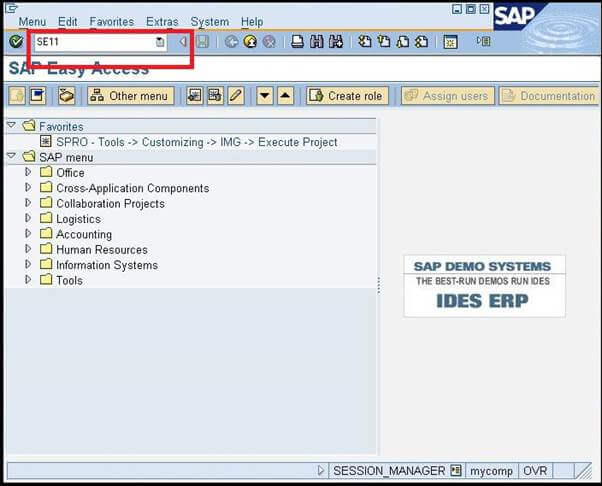
How to find the transaction code?The transaction codes for each application are fixed, so we just need to enter these codes in the command field, and we can directly access that application. There are two ways to find the transaction code:
Next TopicSAP ABAP Dictionary
|
 For Videos Join Our Youtube Channel: Join Now
For Videos Join Our Youtube Channel: Join Now
Feedback
- Send your Feedback to [email protected]
Help Others, Please Share





